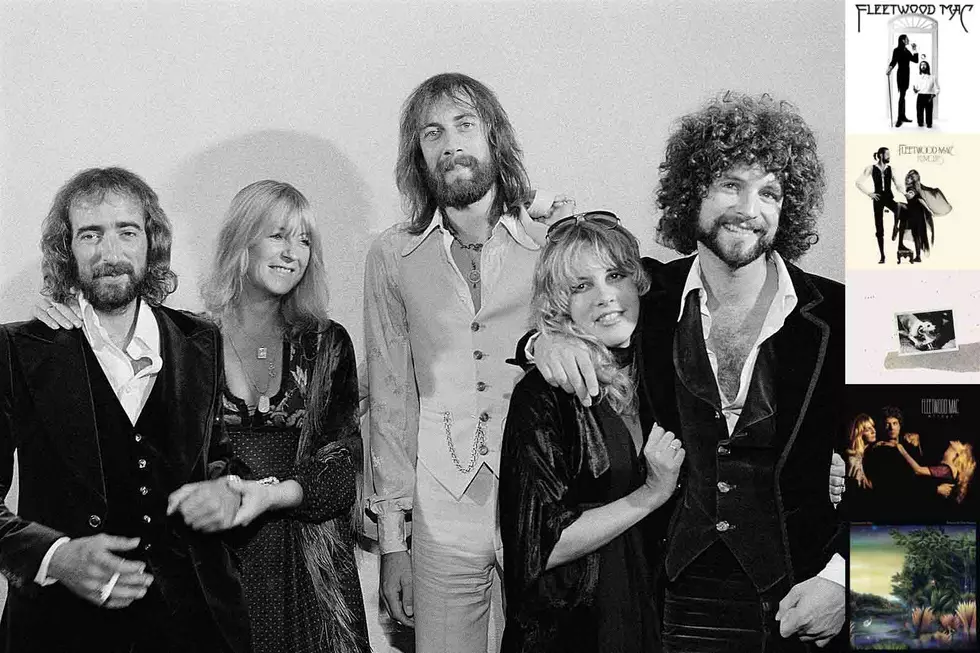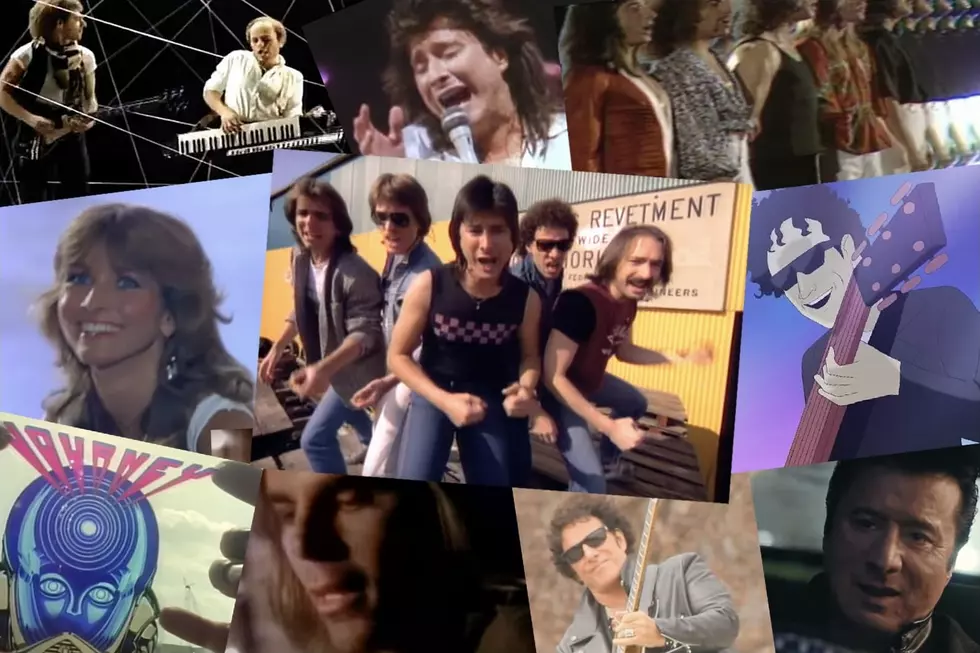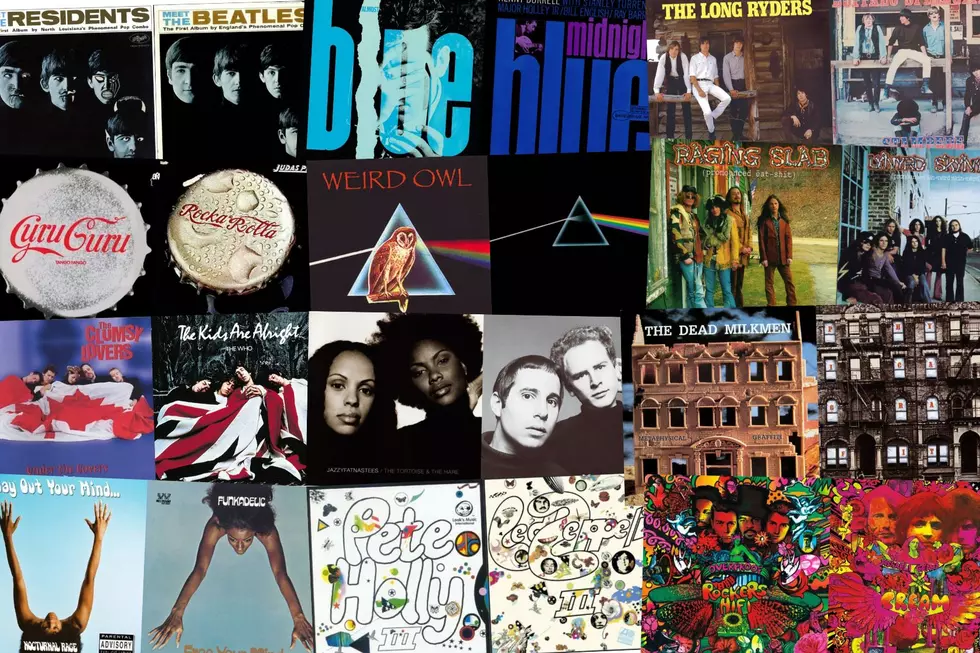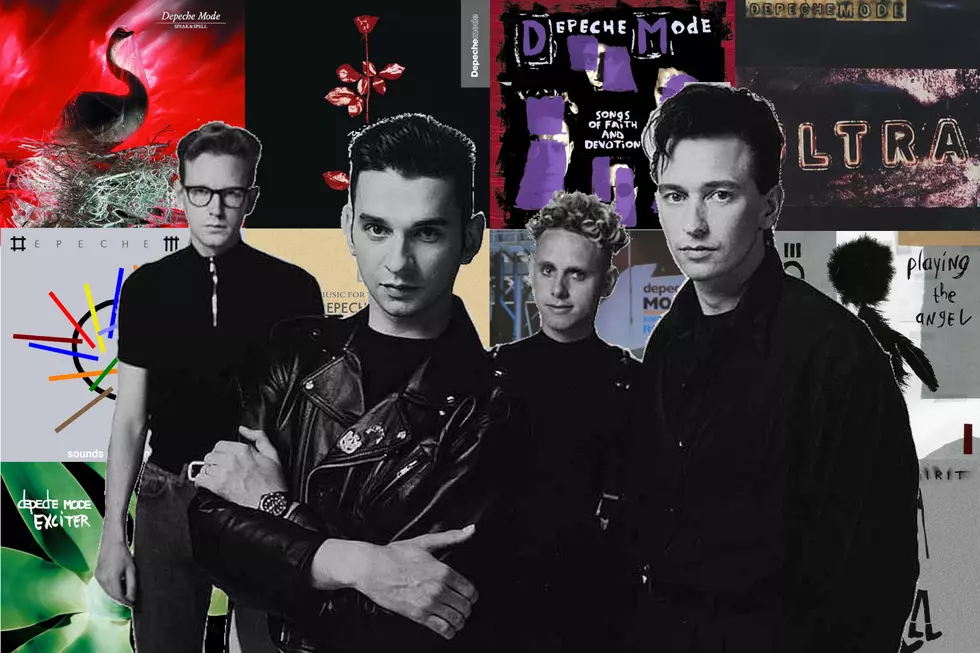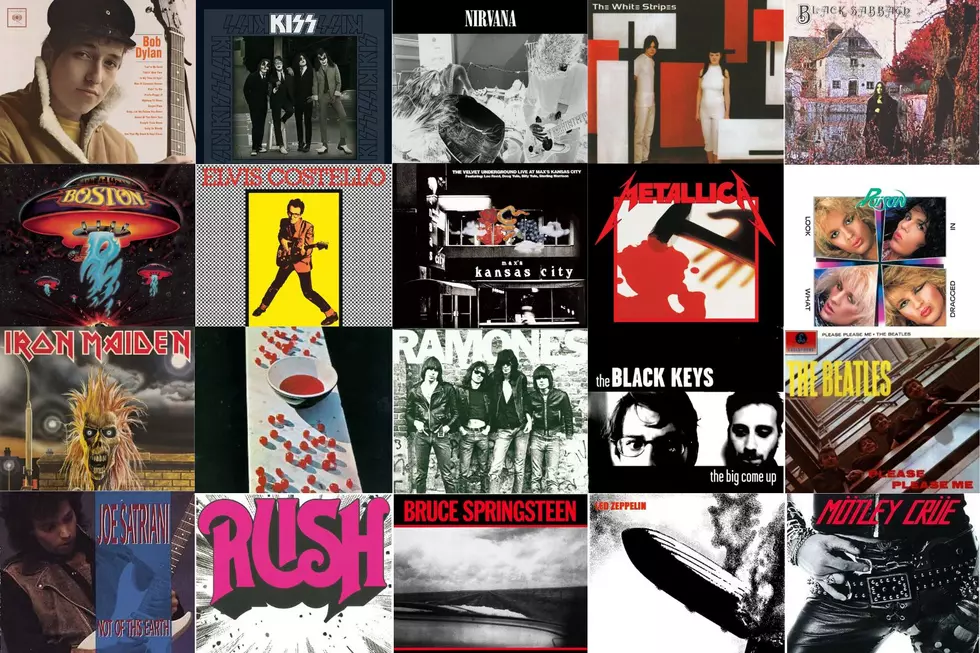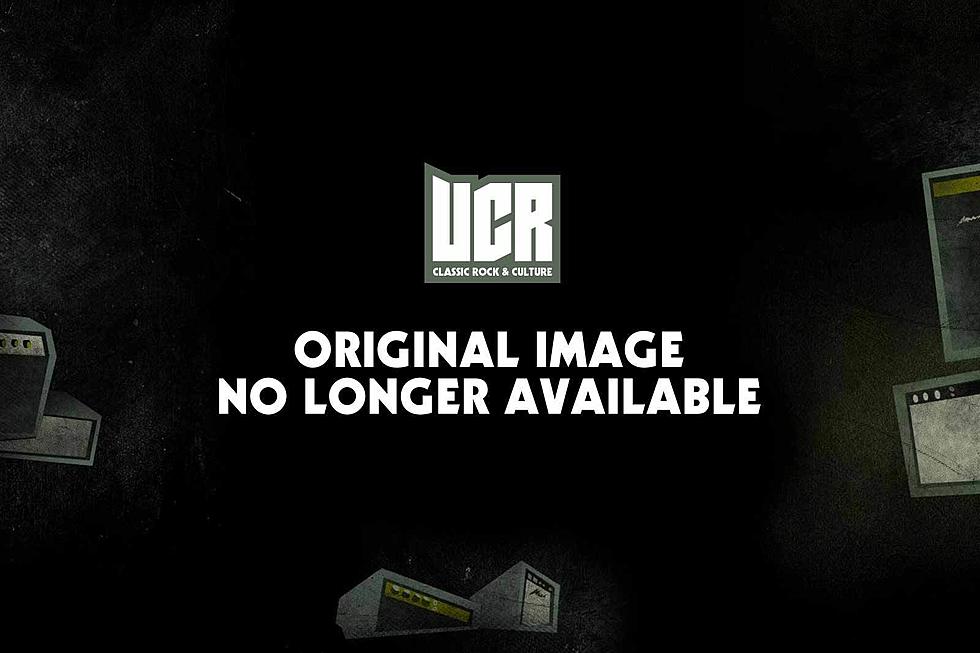
Top 20 Psychedelic Rock Songs
The psychedelic era marked a turning point in rock music.
What had been considered just dance music for the kids was suddenly transformed into both a form of high art and a profitable industry. Everything from lyrics to sonic landscapes to minds were expanded during the final and fruitful years of the '60s.
Psychedelia took on many forms. Just about every style of popular music that existed at the time has been fused with it, though psychedelic rock was the most popular. Almost everyone with a guitar – whether they were in a garage or at Abbey Road – turned on, tuned in and dropped out.
Below we count down the Top 20 Psychedelic Rock Songs that defined an era.
20. July, "The Way" (1968)
July are far from a household name, but fans of the genre rightfully hold their sole 1968 studio album in high regard. "The Way" is marked by a distorted sitar line and has an otherworldly feel like no other (thanks to some clever tape-speed effects). "The Way" is one of the album's most enduring tracks, though some prefer the straighter rerecording that appeared as a B-side to the single "Hello, Who's There?" that came out after the album.
19. Traffic, "Paper Sun" (1967)
Steve Winwood wasted no time after leaving the Spencer Davis Group in early 1967. His next group, Traffic, released its debut single "Paper Sun" in May. With its in-vogue sitar line (courtesy of Dave Mason) and jazzy backing, the song was a hit with the Swinging London crowd. The single reached No. 5 on the U.K. charts and is one of the best examples of the sitar-based psychedelic subgenre known as raga rock.
18. Yardbirds, "Happenings Ten Years Time Ago" (1966)
While some of the band's earlier singles had obvious psychedelic undertones ("Shapes of Things," "Heart Full of Soul"), "Happenings Ten Years Time Ago" dives straight into it. Yardbirds' first song with Jimmy Page (Jeff Beck was also still a member at this point) features a blistering guitar solo over some disorienting spoken word by singer Keith Relf.
17. Dantalian's Chariot, "Madman Running Through the Fields" (1967)
Like many British psych-rockers, Dantalian's Chariot evolved from several R&B groups. By 1967, the band decided to expand its sound and released one excellent single. The A-side, "Madman Running Through the Fields," is almost proto-progressive rock. The song features flute passages and abrupt tempo changes. The guitar is played by future Police member Andy Summers, who revisited the track when he joined Eric Burdon's Animals in 1968: A 15-minute cover is featured on their last album, Love Is.
16. The Jimi Hendrix Experience, "Are You Experienced?" (1967)
Jimi Hendrix's guitar ability often shone during his live performances, but the title track to his group's first album proves he was a master of the studio as well. The song is carefully built around layers of guitars and drums played both backward and forward. The song (and album's) final line, "not necessarily stoned, but beautiful," sums up the psychedelic movement perfectly.
15. Tomorrow, "My White Bicycle" (1967)
Much like Hendrix's "Are You Experienced?," Tomorrow's debut single is a swirling mess of backward guitars and psychedelic effects. The greasy guitar fills are played by future Yes member Steve Howe. Nazareth recorded a more conventional version in 1975 that hit number 14 in the U.K.
14. The Paul Butterfield Blues Band, "East-West" (1966)
While many groups followed their lead, the Paul Butterfield Blues Band were one of the first bands to take the blues and transform it into something cosmic. The aptly named title track from their second album is a 13-minute kaleidoscopic journey into the worlds of blues and Indian classical music. The song is an instrumental that has fiery harmonica and guitar interplay unheard of in 1966. Bob Dylan alum Mike Bloomfield wrote the song after tripping all night in late 1965.
13. Tintern Abbey, "Vacuum Cleaner" (1967)
Tintern Abbey's only single is one of the finest examples of British garage rock. The A-side (confusingly titled "Beeside") is a mellotron-dominated psych-pop number seemingly about a bee meeting a flower. The actual B-side is the real winner, however. "Vacuum Cleaner" features thunderous drums and a feedback-laden guitar solo that would have made even Hendrix jealous.
12. Pink Floyd, "Interstellar Overdrive" (1967)
Although Syd Barrett's pop songs fueled his band's initial commercial success, Pink Floyd preferred playing spacey experimental jams. "Interstellar Overdrive" is based on a descending chromatic riff that quickly descends into an unintelligible haze of reverberated organ and free-form guitar passages. The song was a perfect fit for their live performances, which were accompanied with extravagant light shows as early as 1967. The song began life in late 1966 and remained in the band's set list until 1970.
11. Cream, "Sunshine of Your Love" (1967)
Already somewhat of a veteran of the British blues scene, Eric Clapton, along with bandmate Jack Bruce, expanded beyond the covers and blues cliches to write one of rock's heaviest songs at that point. Clapton's sustained, bass-y "woman tone" would be the blueprint for just about every heavy psych act that followed. Backing the song are Ginger Baker's tribal drums, unusually played only on the toms and cymbals.
10. The Pretty Things, "Talking About the Good Times" (1968)
In 1967, the Pretty Things began work on the world's first rock opera, S.F. Sorrow. That album features some of the most experimental and complex studio trickery in the entire realm of psychedelia. The non-album single "Talking About the Good Times" (recorded during the album's sessions) manages to cram in just about all of that psychedelic trickery in less than four minutes. The peak of the song is the abrupt false ending, where the title is sung in reverb-drenched five-part-harmony.
9. Kaleidoscope, "A Dream for Julie" (1968)
Not to be confused with their American contemporaries using the same name, the English Kaleidoscope took the fairy-tale and whimsical aspects of British psychedelia further than anyone else. “A Dream for Julie,” released as a single A-side in early 1968, features nursery rhyme-inspired verses with one of the best choruses in the genre. The band would soon move into heavier territory, though they made sure to never dial down the lysergic influence.
8. Grateful Dead, "That's It for the Other One" (1968)
Along with “Dark Star,” “That's It for the Other One” had long been a highlight of the Dead’s psychedelic live sets since 1967. And while the live versions can get pretty cosmic, the studio version from 1968’s Anthem of the Sun is transcendent. "That's It for Other One" is a combination of various live performances stitched together with countless studio overdubs and an avant-garde ending crafted by short-tenured member Tom Constanten.
7. Jefferson Airplane, "White Rabbit" (1967)
Psychedelia was about more than expanding just the sonic plane. Tuning in, turning on and dropping out had a literary side as well. The simple boy-girl love lyrics were dropped in favor of fairy tales and fantasy. Newest Airplane recruit Grace Slick was inspired by Alice's Adventures in Wonderland when she wrote "White Rabbit," though the song is less innocent than it seems. The psychedelic march reaches its climax with the rallying cry "feed your head, feed your head."
6. The Jimi Hendrix Experience, "Purple Haze" (1967)
After releasing a cover of "Hey Joe," Jimi Hendrix decided he wanted his band to make something different that was completely their own. The single that followed, "Purple Haze," was unlike anything heard at that point. With its layers of guitar overdubs all played at different speeds and dizzying spoken word, the song more or less launched the Summer of Love.
5. The Doors, "Light My Fire" (1967)
Psychedelia wasn't all flowers and beads. The Doors' debut album, released in early January 1967, features some of the darkest and moody psychedelic pieces before the Summer of Love even started. The group's breakthrough hit, "Light My Fire," may not be as ominous as the album's other tracks, but its accessibility and distinctive sound helped bring psychedelia to the masses.
4. The Who, "I Can See For Miles" (1967)
The Who may have hopped on the psychedelic bandwagon later than most of their contemporaries, but "I Can See for Miles" proves they could do it just as well - if not better. Like many of the other songs recorded for its psychedelic masterpiece Sell Out, the band stepped up its musicianship and compositional ability while sacrificing none of its volume. The song's complex drum parts and layers of multitracked vocals also made the song their most complex to date. The vocal harmonies in the last verse are unmatched by almost all of their peers.
3. The Byrds, "Eight Miles High" (1966)
"Eight Miles High" is not only one of the first psychedelic rock songs but also one of the best. Guitarist Roger McGuinn's expert fusion of Indian and jazz melodies on his Rickenbacker 12-string signaled the start of an exciting new era. The dreamy harmonies and disorienting lyrics perfectly complement the surreal musical backing. While the song is actually about flying (something cowriter Gene Clark loathed), the song was still banned by U.S. radio stations for its perceived druggy subtext. The Byrds first recorded the song in December 1965, but the single had to be rerecorded the following month for legal reasons.
2. Pink Floyd, "See Emily Play" (1967)
Syd Barrett's Pink Floyd expertly fused the light and dark sides of psychedelia; for every pop song about a gnome or scarecrow on their debut, there was one free-form freak-out. "See Emily Play"'s eerie organ and detached backing vocals are expertly counteracted with a poppy chorus and dainty piano fills. In a way, the song reflected Barrett's own life, which began to worsen as stress and hallucinogens took hold over the rest of the year. The song's chorus references the Games for May concert, a psychedelic extravaganza hosted by the band in May 1967.
1. The Beatles, "Strawberry Fields Forever" (1967)
While psychedelia had already been established by early 1967, "Strawberry Fields Forever" was more or less the real start of the genre. This was the song that made even the most professional and successful bands take their craft more seriously. Even Brian Wilson, who had just completed Pet Sounds with his group the Beach Boys, was floored by it. The complexity and amount of tape editing involved was almost unheard of for an album, much less a single track. The song's unique texture and instrumentation makes it one of the most innovative and important recordings not only in the history of psychedelia, but in recorded music as a whole.
Top 25 Psychedelic Rock Albums
More From Ultimate Classic Rock

